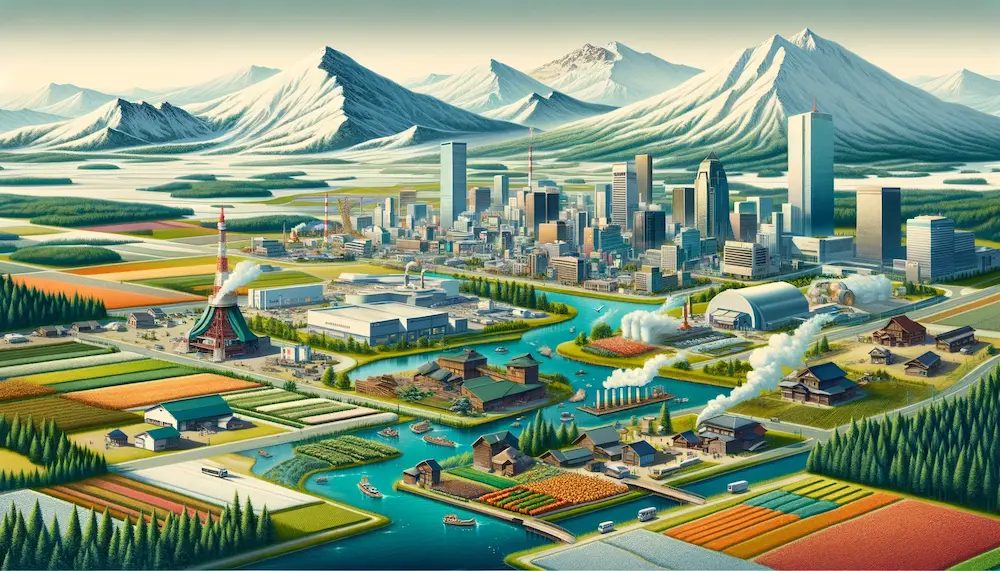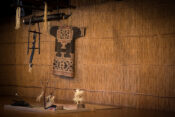Contemporary Hokkaido: Exploring the Economic Powerhouse and Cultural Gem of Japan’s North
Hokkaido, Japan’s northernmost island, is a region of incredible natural beauty and vibrant cultural heritage. In modern times, it has become a significant player in Japan’s economy and a beloved destination for both domestic and international tourists. This article explores the contemporary economic and cultural landscape of Hokkaido, highlighting its key economic sectors, cultural developments, and the various attractions that make it a premier tourist destination.
Hokkaido’s Economy and Culture in Modern Times
Hokkaido’s economy has diversified and grown significantly in recent decades. Key economic sectors include agriculture, fisheries, manufacturing, and tourism. The island is known for its large-scale farming operations, producing a significant portion of Japan’s dairy products, potatoes, and other agricultural goods. The fishing industry is also a major contributor, with Hokkaido’s waters providing a rich bounty of seafood such as crab, scallops, and salmon.
In recent years, technology and innovation have played an increasingly important role in Hokkaido’s economic development. The region has seen growth in sectors such as information technology, renewable energy, and biotechnology. Sapporo, the island’s largest city, has emerged as a hub for tech startups and innovation, attracting talent and investment from across Japan and beyond.
Culturally, Hokkaido is a dynamic blend of traditional and modern influences. The island hosts numerous festivals and events throughout the year, celebrating everything from the changing seasons to local foods and crafts. The Sapporo Snow Festival, for example, is a world-renowned event that attracts millions of visitors each winter to see its spectacular ice and snow sculptures. Other notable events include the Yosakoi Soran Festival, showcasing traditional Japanese dance, and the Hakodate Port Festival, celebrating the rich maritime history of the region.
Hokkaido’s cultural landscape is also shaped by the indigenous Ainu people, whose traditions and practices continue to be preserved and promoted. The establishment of the National Ainu Museum and Park in Shiraoi in 2020 marked a significant step in recognizing and celebrating Ainu culture. This institution serves as a center for education and cultural exchange, highlighting the contributions and history of the Ainu people.
Attractions as a Tourist Destination
Hokkaido is celebrated for its stunning natural landscapes and unique attractions, making it a top destination for tourists. The island offers a wide range of activities and experiences, catering to diverse interests and seasons.
One of the major draws is Hokkaido’s ski resorts, such as Niseko, Furano, and Rusutsu, which are famous for their powder snow and world-class facilities. These resorts attract winter sports enthusiasts from around the globe and contribute significantly to the local economy. Beyond winter sports, these areas also offer activities like hiking, mountain biking, and hot air ballooning in the warmer months.
Hokkaido’s hot springs, or onsen, are another major attraction. Onsen towns like Noboribetsu, Jozankei, and Toyako provide relaxing retreats set against beautiful natural backdrops. These hot springs are known for their therapeutic properties and are a favorite among both tourists and locals seeking relaxation and wellness.
The island is also home to several national parks, including Shiretoko, Daisetsuzan, and Akan-Mashu. These parks offer breathtaking scenery, diverse wildlife, and opportunities for outdoor activities such as hiking, bird watching, and camping. Shiretoko Peninsula, a UNESCO World Heritage Site, is renowned for its pristine environment and abundant wildlife, including brown bears and rare bird species.
Culinary tourism is another significant aspect of Hokkaido’s appeal. The island is famous for its fresh seafood, dairy products, and agricultural produce. Visitors can enjoy a variety of local specialties, such as Hokkaido crab, uni (sea urchin), and the region’s renowned dairy products, including milk, cheese, and ice cream. The city of Sapporo is also known for its unique miso ramen and the popular Sapporo Beer, which has been brewed locally since 1876.
Efforts to promote sustainable tourism have also been gaining traction in Hokkaido. Initiatives aimed at preserving the natural environment, supporting local communities, and promoting eco-friendly travel options are increasingly prioritized. These efforts ensure that Hokkaido’s natural and cultural treasures can be enjoyed by future generations.
Conclusion
Contemporary Hokkaido is a region of economic vitality and cultural richness, seamlessly blending tradition and modernity. The island’s diversified economy, driven by agriculture, fisheries, technology, and tourism, underpins its prosperity. Culturally, Hokkaido celebrates its unique heritage through festivals, events, and the preservation of indigenous traditions.
As a tourist destination, Hokkaido offers unparalleled natural beauty and diverse attractions, from world-class ski resorts and hot springs to national parks and culinary delights. The ongoing efforts to promote sustainable tourism further enhance its appeal, ensuring that visitors can enjoy its wonders responsibly.
Understanding the contemporary landscape of Hokkaido provides valuable insights into its ongoing evolution and future prospects. For those interested in exploring more about Hokkaido, a visit to this captivating island promises a rich and rewarding experience.









